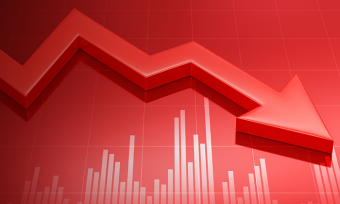Over the past year or so we’ve seen a decline in the number of properties sold in New Zealand, from 100,000 down to about 68,000. The chances are that turnover will decline a bit further in coming months now that we know interest rates are still going to go slightly higher.
Recently, the Reserve Bank (RBNZ) announced a record 0.75% increase in the official cash rate, which now sits at 4.25%. It predicts that the rate will go to 5.5% next year, that the economy will experience a 1% recession into 2024, and that the unemployment rate won’t rise to the 5% it previously predicted, but will now get as high as 5.7%.
These developments are fairly negative for the property market
It certainly seems reasonable to talk in terms of the cycle not turning until winter next year, rather than autumn, given the extra upside for interest rates.
But it pays to note something important regarding monetary policy. The main monetary policy weapon is the official cash rate, which rises when restraint needs to be imposed on the rate of inflation. But there is a second weapon, and that is the words used by the RBNZ, and by its governor, in particular.
During the last sustained monetary policy tightening cycle, between 2004-07, not only was the pace of increase in interest rates relatively slow, but the words used were overly mild and calming.
The RBNZ has learned its lesson. Now, interest rates are rising at the fastest pace we have ever seen and, courtesy of the RBNZ’s recent monetary policy statement, the words being used are the strongest seen in a very long time.
This is good monetary policy: it means more people are likely to be concerned about the economy
People will start thinking more seriously about their personal finances, employment prospects and their personal wealth. This means the chances have just increased that consumer spending will be crunched over the next six to nine months, on top of the downward impact that was going to come along anyway, as a result of people rolling off previously record low fixed interest rates into much higher ones.
I still feel we’re in the endgame for the housing cycle turning downward, but as I’ve stressed for the past four months, this doesn’t mean house prices won’t fall further. Clearly, they are going to, as a result of increased household pessimism and higher debt-servicing costs. But household incomes are continuing to rise, courtesy of firm wages growth, job security is still very high, construction costs are going up, and net migration flows are proving to be stronger than previously anticipated.
There might be another 5% or so decline in house prices to come towards the middle of next year, but there is something very important that potential buyers need to keep in mind. As each month goes by the queue of frustrated buyers gets longer and longer.
Because of the latest increase in interest rates, when the housing cycle turns upward the initial surge in activity and prices is likely to be stronger than would otherwise have been the case. This means that while buyers still have time on their side, there is a risk that by trying to pick the bottom, they could miss it and then have to make a purchase when FOMO is again rising strongly.
And perhaps there is one further thing to keep in mind
The RBNZ is predicting recession and rising unemployment next year, which increases the chances of a change in government in the general election.
That means as we go through 2023, more investors will be anticipating the return of interest expense deductibility, and are likely to take advantage of the high listings levels and increasingly compliant vendors to make good long-term strategic purchases.
This post first appeared on the Squirrel website, and is reproduced here with permission.
To sign-up to Tony’s View publication, or weekly Tview Premium plus extras, click here.
Or to learn more about Squirrel home loans click the button below:






Share this article